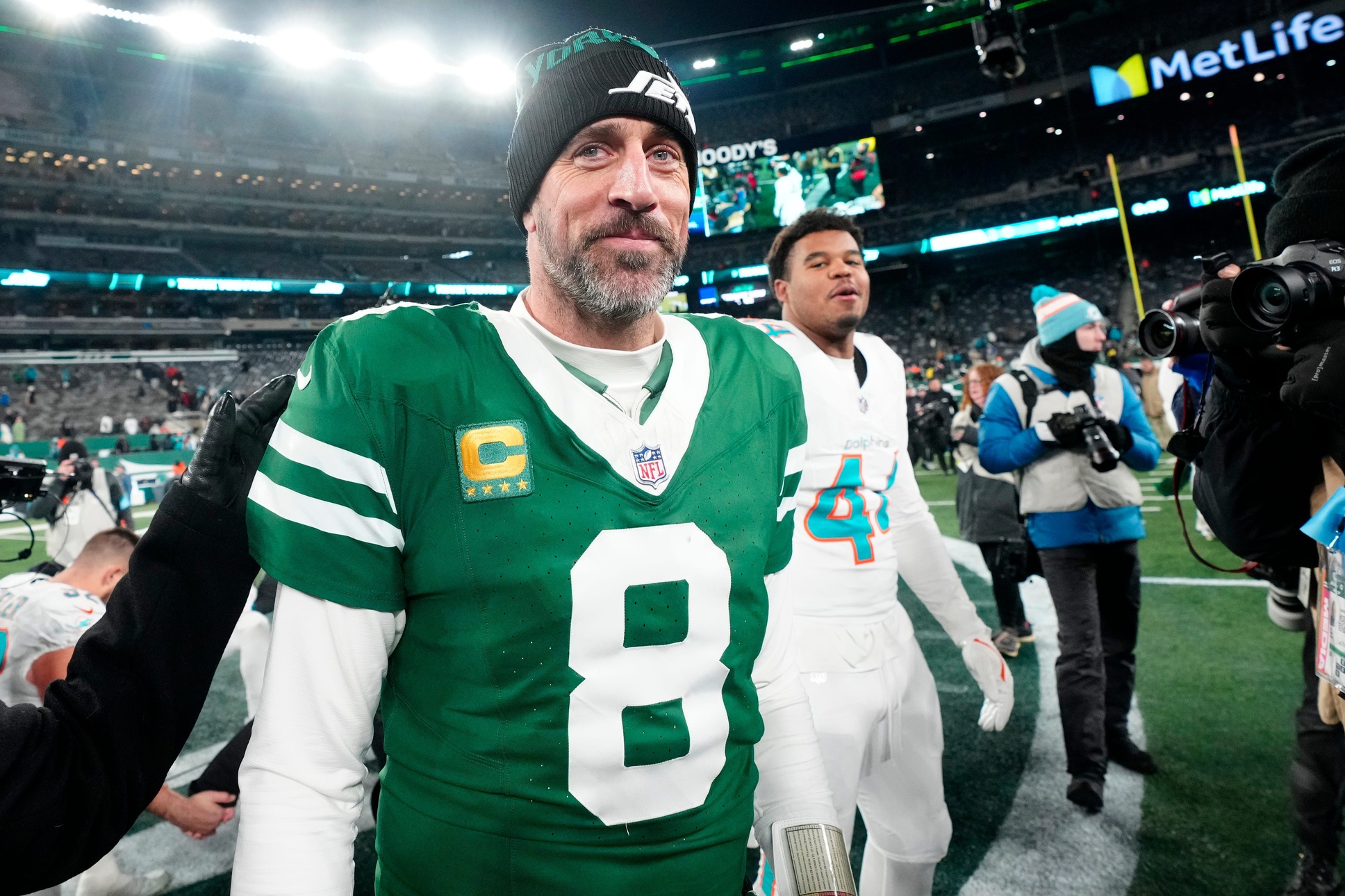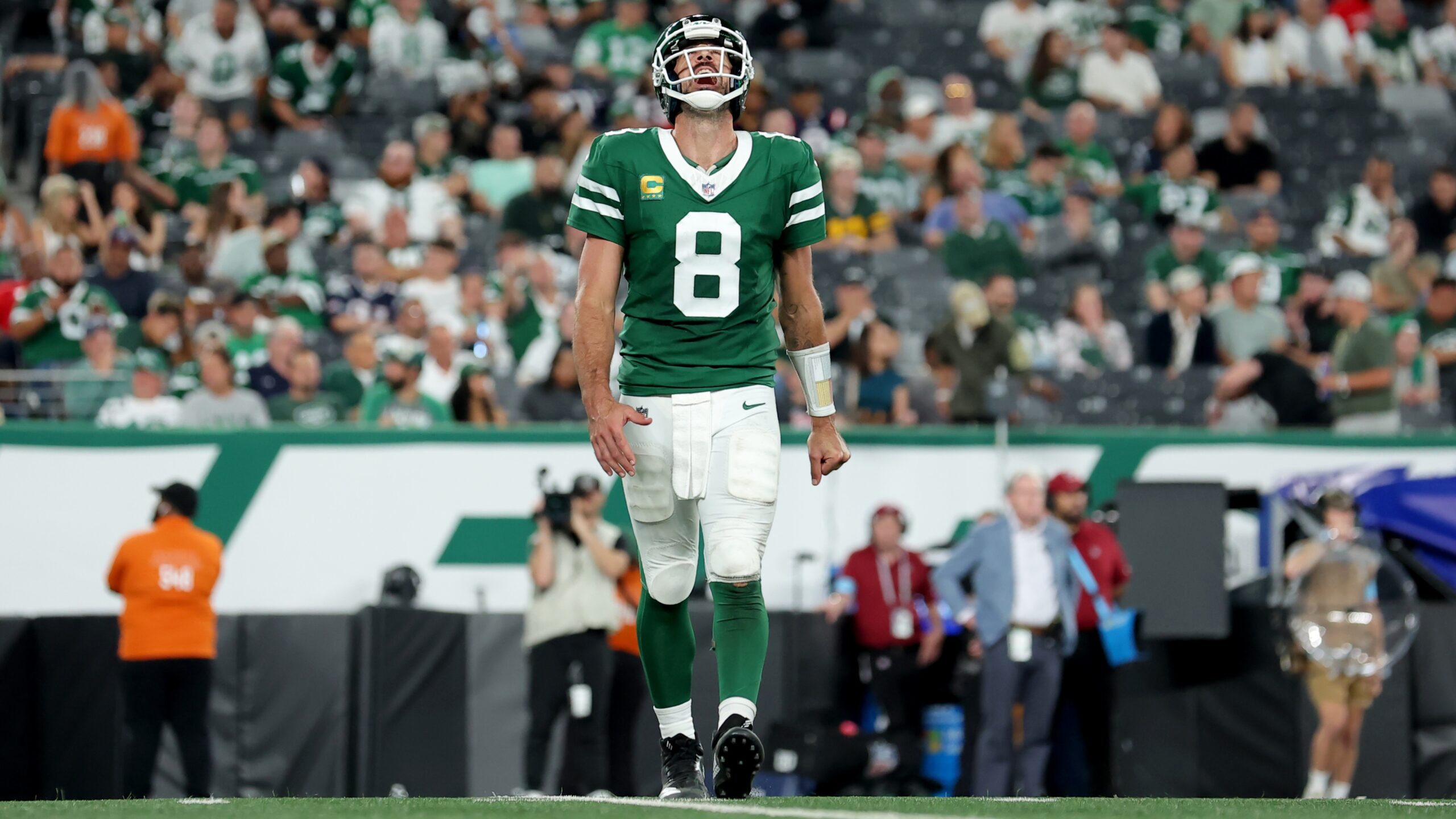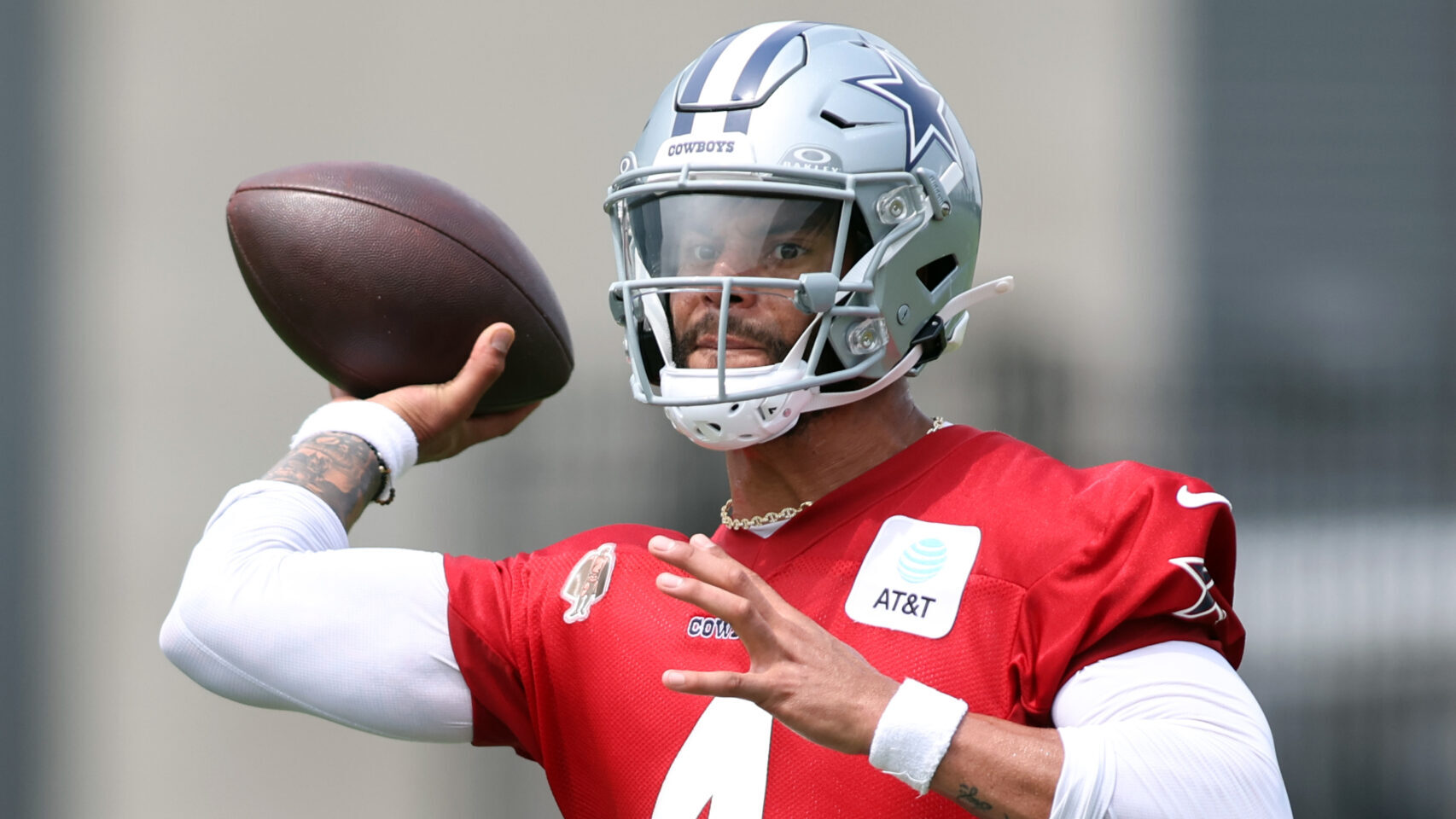Analysis
9/9/23
6 min read
How To Handle Week 1 Chalk in DFS
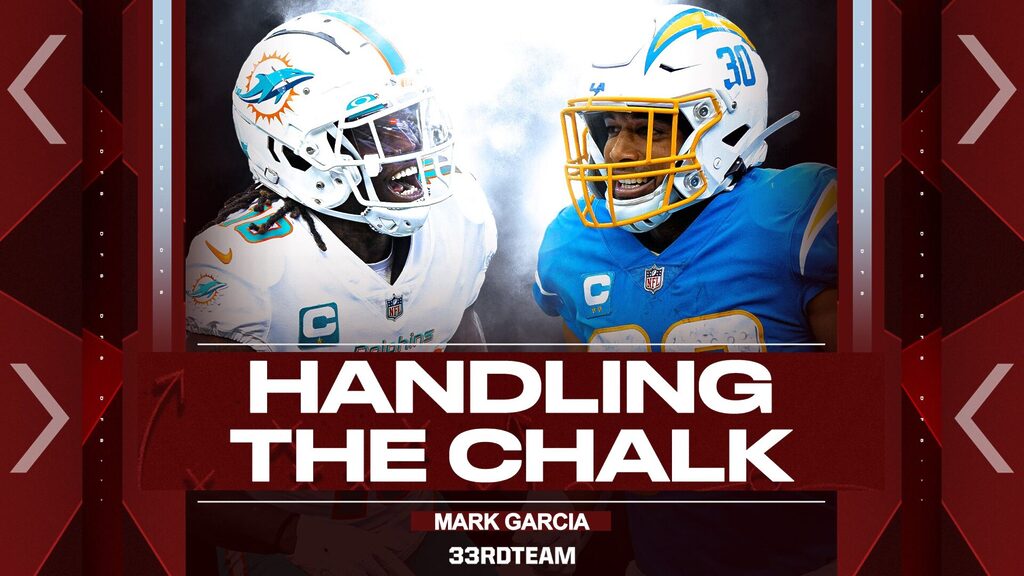
Chalk will develop on any given slate. It is a human psychological certainty introduced in games of competing agents. Things like crowd, or group, psychology, risk acceptance profiles, a desire to seek comfort and an innate disdain for the unknown lead people to naturally gravitate toward certain areas of a player’s range of outcomes through a craving for control. This yearning for comfort is exactly what we will dissect — and break through — in this weekly article.
We’ll also explore theoretical and conceptual areas of roster construction in DFS as we examine various pieces of chalk throughout the season. The goal is to grow as players along the way. Numerous tips, or best practices, will emerge from this exploration. With that, and in our best Morgan Freeman voice, let us begin.
Week 1 Chalk
Commanders D/ST, $2,800
A defense is the highest expected exposure from the field on this slate. Let that sink in. To fully understand the theoretical components at play here, we must first understand how defenses score points. Touchdowns are a greater portion of defensive scoring than any other position, and touchdowns are the most variant act in football. That means that defensive scoring is the most variant of all positions in DFS. Shy away from chalk at defense.
Justin Jefferson, $8,800
Justin Jefferson prepares to square off against a Todd Bowles defense that has historically utilized Cover-3 at an above-average rate. That is due to its emphasis on stopping the run and desire to not let opposing teams get in behind it. Jefferson finished the 2022 season ranked third in yards per route run (YPRR) and averaged 15.1 yards per reception against Cover-3 alignments. If this game environment erupts, it is highly likely to come through Minnesota’s alpha.
Marvin Mims Jr., $3,000
The field is likely experiencing some “best ball lag” with Marvin Mims Jr., a player who finished the draft season with the second-highest ADP movement of all players. While not a bad play on paper, considering the matchup, team dynamics, and cost, Mims carries a wide range of outcomes in what is expected to be a rather one-dimensional, downfield role for the Denver Broncos. We're interested to see where this Mims exposure moves should Jerry Jeudy play on Sunday.
Tyreek Hill, $8,200
The clear alpha in the perceived top game environment on the slate – the expected field exposure makes sense here. That said, the field is downplaying the loss of left tackle Terron Armstead for the Miami Dolphins and both defenses' multitude of offseason changes. Dolphins defensive coordinator Vic Fangio and Los Angeles Chargers coach Brandon Staley (who also is the defensive play caller) are two of the top seven or eight defensive minds in the NFL. The Dolphins sunk significant capital into their defense this offseason through free agency and the trade for Jalen Ramsey. Hill is not a bad play, but it is much less likely that he will put up a score you couldn’t win a GPP without.
Jamaal Williams, $5,100
Jamaal Williams should have the backfield work primarily to himself on Sunday, considering the suspension of Alvin Kamara and the injury to Kendre Miller. Still, the matchup is far from ideal against a Tennessee Titans defense that prides itself on winning in the trenches. Coach Mike Vrabel continuously dedicates additional assets to the box and plays heavy rates of zone behind the front seven to try and contain the pass. The Titans finished the 2022 season ranked first in yards allowed per carry at 3.4 and the 2021 season ranked sixth at 3.9. Furthermore, Williams is not a breakaway runner as much as he is a between-the-tackles grinder. Even at $5,100 in salary, Williams likely needs multiple scores to sniff a GPP-worthy score.
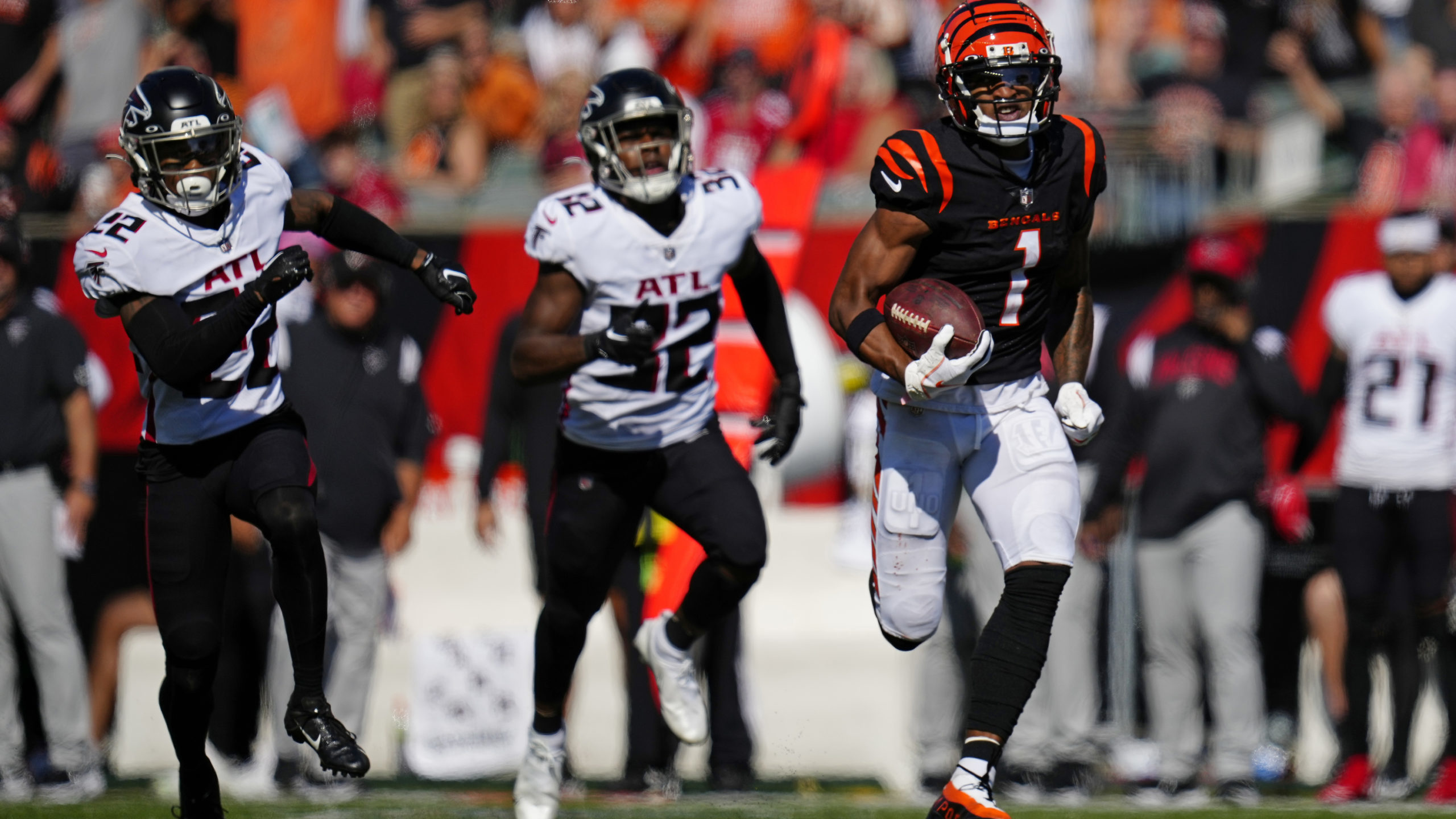
Ja’Marr Chase, $8,100
Ja’Marr Chase against man coverage is a mismatch in any matchup. Yes, that includes a matchup against the likely shadow coverage of Denzel Ward. With no true field stretcher working downfield (that would be Chase, but why would you send him downfield as a safety manipulator with the talent profile he has?), Chase will likely need excessive amounts of schemed usage in this matchup to put up a slate-breaking score. However, that is well within his range of outcomes. Instead of thinking, “Should I play Chase this week,” think, “How can I play Chase differently than the field this week.”
Week 1 Pricing Psychology
Certain psychological aspects regarding player pricing are more prevalent in DFS early in the season. Four of the top six players in the field’s expected exposure are wide receivers, with three being the wide receivers with the highest salary in Week 1.
Player pricing is the loosest we will see all season, meaning we will feel we have additional salary to allocate to certain positions in our rosters this week. The general human tendency to seek comfort leads to that salary being spent at positions of greater certainty at a high frequency. Five years ago, in the land of workhorse running backs, the answer was to simply jam in David Johnson and Le’Veon Bell. In today’s NFL, that certainty is found most frequently at wide receiver and quarterback, which leads to inflated exposure rates amongst the elites at those two positions.
But if most players are underpriced relative to their individual range of outcomes to start the year, players in the mid-range of pricing carry the potential to increase the most in salary over the coming weeks.
Week 1, Tip No. 1
Balanced rosters generate exorbitant amounts of leverage early in the season and typically can be built without sacrificing median expectations.
Continuing that discussion, it is a human tendency to view roster construction in DFS through the lens of median projections, which are the numbers you see spit out by projections models and used in optimizers and player rankings. By definition, the eventual player outcome will land below the median projection half of the time and above the median projection half of the time. In Guaranteed Prize Pool (GPP) contests, don't be overly concerned with median projections so much as considering a player’s entire range of outcomes.
We can then use this macro view to build rosters that carry the best combination of floor and ceiling relative to the contest size and payout structure. Theoretically and conceptually, be willing to accept greater risk or variance in contests with more entries and proportionally reject variance in contests with fewer entries, as would be the case in double-ups, head-to-heads, and cash games.
Week 1, Tip No. 2
Don’t be afraid to build rosters with a more fragile median projection if it means your roster is constructed differently than the field.
That will do it for our Week 1 exploration of chalk and some theoretical and conceptual takeaways. We’ll run this series every week of the 2023 season, picking out new learning points each week. All feedback is welcome with this new column, so please don’t hesitate to reach out to let me know things you like or things I could do better.


